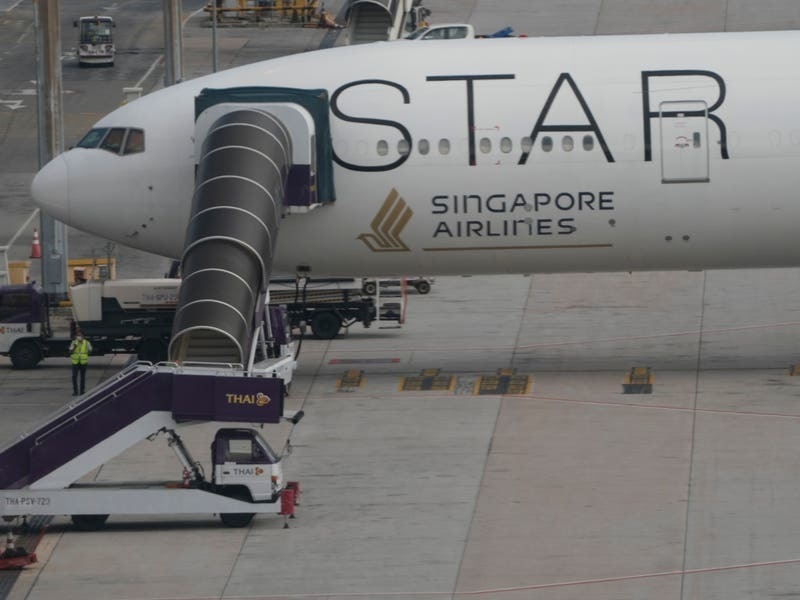The Singapore Airlines jetliner that hit severe turbulence last week went through huge swings in gravitational force in less than five seconds, likely causing the injuries to people who weren’t buckled into their seats, according to a preliminary report Wednesday by Singapore’s Transport Ministry.
Geoff Kitchen, 73, died of a suspected heart attack and dozens were injured after the Boeing 777, which was flying from London’s Heathrow Airport to Singapore on May 21, ran into turbulence that hurled people and items around the cabin.
The plane, with 211 passengers and 18 crew members, made an emergency landing in Bangkok.
Early findings show that as the plane cruised at about 37,000 feet over southern Myanmar, it began to experience slight vibration due to changes in the gravitational force, the ministry said.
The jet’s altitude increased — likely caused by an updraft, not by any action of the pilots — causing the autopilot system to push the plane back down to the selected altitude, the report said.
“The aircraft experienced a rapid change in G (gravitational force) … this likely resulted in the occupants who were not belted up to become airborne” before falling back down later, the ministry said.
“The rapid changes in G over the 4.6 second duration resulted in an altitude drop of 178 feet … this sequence of events likely caused the injuries to the crew and passengers.”
During the turbulence, it said a pilot was heard calling out saying the fasten seatbelt sign had been switched on.
It said recorded data indicated the pilots manually controlled the plane for 21 seconds to stabilise it before re-engaging the autopilot.

Passengers have described the “sheer terror” of the aircraft shuddering, loose items flying and injured people lying paralysed on the floor of the plane.
Twenty-six people remained in hospital in Bangkok on Wednesday.
Hospital authorities earlier said injuries included spinal or spinal cord damage, skull or brain injuries and damage to bones or internal organs.
It was unclear what caused the turbulence.
Most people associate turbulence with heavy storms, but the most dangerous type is so-called clear air turbulence.
Wind shear can occur in wispy cirrus clouds or even in clear air near thunderstorms, as differences in temperature and pressure create powerful currents of fast-moving air.
According to a 2021 report by the US National Transportation Safety Board, turbulence accounted for 37.6% of all accidents on larger commercial airlines between 2009 and 2018.
The Federal Aviation Administration has said there were 146 serious injuries from turbulence from 2009 to 2021.






